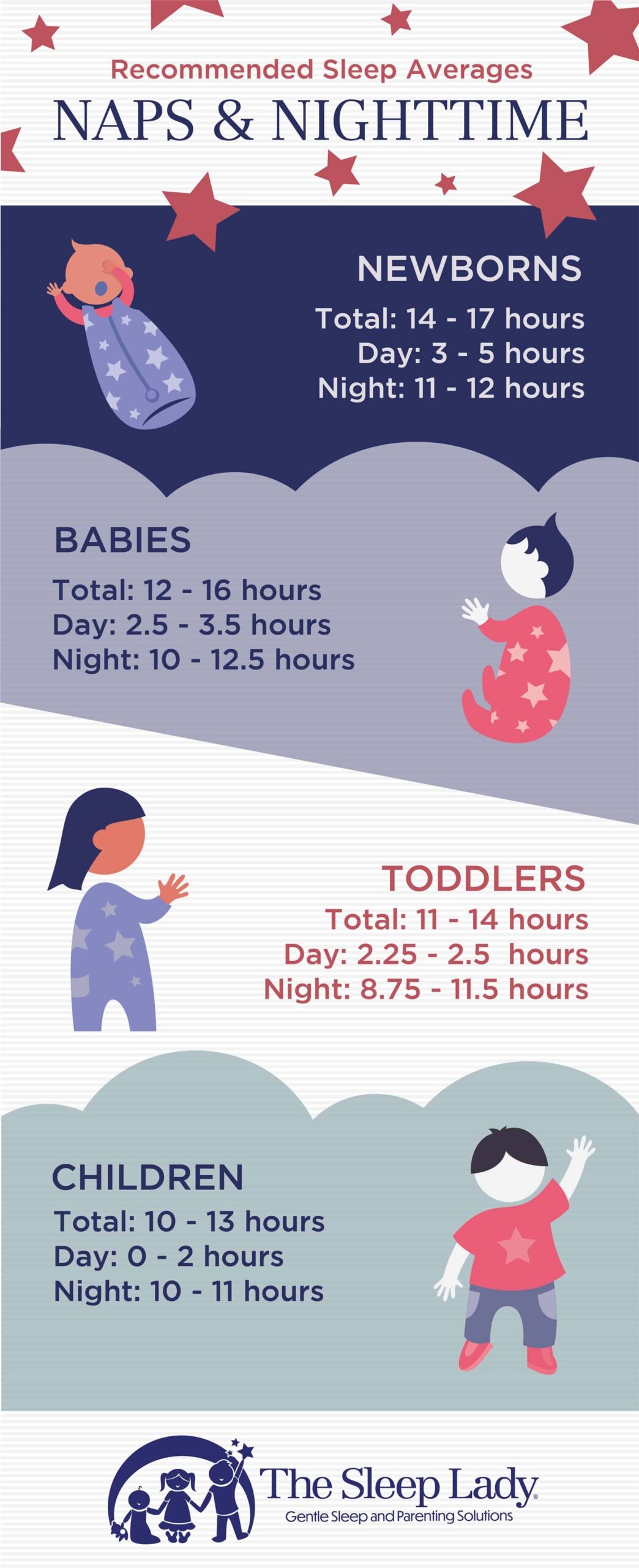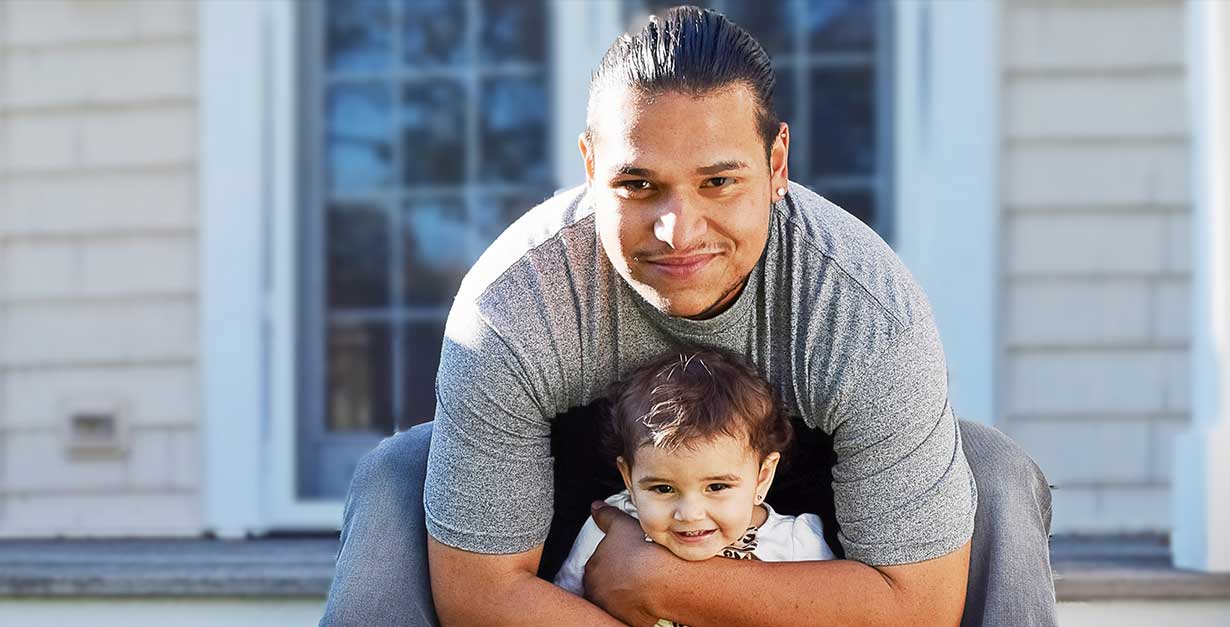At this age toddlers need an average of 11.25 hours of uninterrupted sleep at night and 2.25 to 2.5 hours of naps during the day. Children at the younger end of this age bracket take two naps, in the morning and afternoon, but by eighteen months most consolidate to one midday or afternoon nap. Toddler sleep schedules for these ages have to work in that nap transition. Here’s what makes sleep difficult at these ages:
- Young toddlers are prone to behavioral sleep problems
- Increased mobility (walking)
- Peak separation anxiety
- Emotional attachment to objects like bottles and pacifiers
13-Month-Old Sleep Schedule
At this age, many toddlers are still taking two naps but may begin resisting one. If that happens, you can start capping the morning nap or moving the afternoon nap earlier.
Example schedule:
- Wake-up: 6:30 – 7:30 a.m.
- Morning nap: 9:30 – 10:30 a.m.
- Afternoon nap: 1:30 – 3:00 p.m.
- Bedtime routine: 6:30 p.m.
- Asleep by: 7:00 – 7:30 p.m.
Watch for signs that your child is ready to transition—such as long wake windows, skipping naps, or bedtime battles
14-Month-Old Sleep Schedule
At 14 months, some toddlers still take two naps, while others are ready to transition to one. If your child is resisting their morning nap but struggling to make it to bedtime without becoming overtired, it might be time to start shifting to a single midday nap.
Sample schedule:
- Wake-up: 6:30 – 7:30 a.m.
- Morning nap (if still on two naps): 9:30 – 10:30 a.m.
- Afternoon nap: 1:30 – 3:00 p.m. (or 12:30 – 2:30 p.m. if on one nap)
- Bedtime routine: 6:30 p.m.
- Asleep by: 7:00 – 7:30 p.m.
If your toddler is still on two naps, you can gradually shorten the morning nap and shift the afternoon nap earlier until they’re ready for just one midday nap.
15-Month-Old Sleep Schedule
By 15 months, most toddlers are on one nap. If your child is still taking two naps but bedtime has become a struggle, it may be time to transition.
Typical 15-month-old schedule:
- Wake-up: 6:30 – 7:30 a.m.
- Nap: 12:30 – 2:30 p.m.
- Bedtime routine: 6:30 p.m.
- Bedtime: 7:00 – 7:30 p.m.
Some toddlers need help stretching their wake time in the morning when moving to one nap. You can offer a quiet activity or move lunch a little earlier while their body adjusts.
18-Month-Old Sleep Schedule
By 18 months, your toddler should be on a solid one-nap schedule. This is a great time to focus on keeping wake times consistent to prevent overtiredness.
18-month-old sample schedule:
- Wake-up: 6:30 – 7:30 a.m.
- Nap: 12:30 – 2:30 p.m.
- Bedtime routine: 6:30 p.m.
- Asleep by: 7:00 – 7:30 p.m.
If your child takes a very long nap and struggles to fall asleep at night, you can try capping the nap at 2 hours. Look out for the 18 month sleep regression.
Sample Toddler Sleep Schedules, 13 to 18-Months-Old
(Shift earlier if your child wakes between 6:00 and 7:00 a.m.)
7:00–7:30 a.m. Wake-up and breakfast.
9:00–9:30 a.m. Start of one-hour morning nap if she’s still taking one. She’ll
probably want a snack right after the nap.
11:30 a.m.–12:30 p.m. Lunch (depending on morning-nap timing).
12:30–1:30 p.m. Start of afternoon nap. About an hour and a half if it’s a second
nap, about two to two and a half hours if it’s the only nap of the
day. Snack after nap.
5:00–5:30 p.m. Dinner.
6:00–6:30 p.m. Start bath/bedtime routine.
7:00–8:00 p.m. Asleep.
Other Toddler Sleep Schedules
As your toddler grows, their sleep needs will continue to evolve.
For example:
- 21-22 months: 12:30 – 2:30 p.m. nap, bedtime between 7:00 – 7:30 p.m.
- 30 months (2.5 years): Some toddlers may start skipping naps, but most still benefit from a nap around 1:00 – 2:30 p.m..
Nap Transitions
Moving to One Nap
The transition to one nap usually happens between 14-18 months. If your child is resisting naps but still needs daytime sleep, start by pushing the morning nap later and eventually dropping it altogether.
A gradual shift helps avoid overtiredness:
- Move the morning nap later by 15-30 minutes every few days.
- Once the nap reaches 12:30 p.m., hold it there.
- Adjust bedtime as needed to prevent overtiredness.
Want to know more about dropping the nap?
Read: Drop to One Nap — Is My Toddler Ready for a Single Nap?
Wake Windows & Sleep Needs
For 14-18 months:
- Wake-up to nap: 4-5 hours
- Nap to bedtime: 4-5 hours
- Total sleep: 11-12 hours at night, 2-3 hours during the day.
If your child is waking up too early or struggling with naps, check their wake windows. Overtiredness often leads to night wakings, while too much daytime sleep can cause bedtime resistance.
Bedtime Routine
At this age, a consistent and soothing bedtime routine is essential. A predictable sequence of events helps signal to your toddler that it’s time to sleep.
A simple bedtime routine could look like this:
- Bath
- Pajamas
- Storytime
- A quiet song or cuddle
- Into the crib awake but drowsy
At bedtime, we want to bore them to sleep—no tickling, roughhousing, or high-energy activities right before bed.
The Temper Tantrum Emerges
As if nap schedules changing isn’t enough, temper tantrums often emerge at this age, and toddlers start testing their parents. Bedtime is a common battleground for toddlers flexing emerging willpower muscles. A soothing bedtime routine is extremely important for children this age, and adhering consistently to routines and setting clear rules is essential—because the next stage is only tougher.
Need more information about bedtime routines?
Read: Bedtime Routine For Toddlers — Soothing And Predictable
Separation Anxiety
Separation anxiety hits a peak right around the first birthday. Saying “night-night” to parents can be tough. That nice, long transition to bedtime, good focused time with one or both parents, helps ease the fears. Although one year-olds can’t say much, they understand an awful lot, so give plenty of verbal assurances that you are nearby.
Having a “Lovey” helps with separation anxiety.
Read: The Lovey — Your Child’s First Best Friend
We have sleep schedules for everyone!
Read: Sample Schedules: Sleep and Naps From 6 Months to Preschool

Balancing Toddler Sleep Schedules with Flexibility
Children need regular naptimes, regular bedtimes, and three recognizable mealtimes. Their bodies need the routine to regulate day and night hormone cycles, and to keep them in sync with their internal clocks. Their little hearts and minds need certainty and predictability to feel secure. But I also believe in some flexibility. The sample schedule is a good starting point, but you can adjust it.
You may also have to play with the schedule a bit to accommodate the needs of your other children. Sleep times are averages. Some kids sleep more, some sleep less, but the variations are a lot less than many parents think. If your child is napping and sleeping poorly, chances are you are underestimating how much sleep she needs.
Look at Daytime Behavior
Watch her daytime behavior. If she’s easy and content, she’s probably on a pretty good schedule. When she’s fussy and demanding, she may need longer naps, an earlier bedtime, a later wake-up time—or all of the above. If you have to skip a nap because of a doctor’s appointment or some other essential interruption, most toddlers fare better missing the morning nap than the afternoon one. You can temporarily move the afternoon nap up a bit to compensate for a missed morning one.
The key to great sleep is consistency and patience. Some days will be easier than others, but sticking to a schedule and responding gently to your child’s needs will help them become a confident, independent sleeper.
If naps or bedtimes are a struggle, take a deep breath and remember—you’re teaching your child an essential life skill, and you don’t have to do it alone. You’ve got this!



